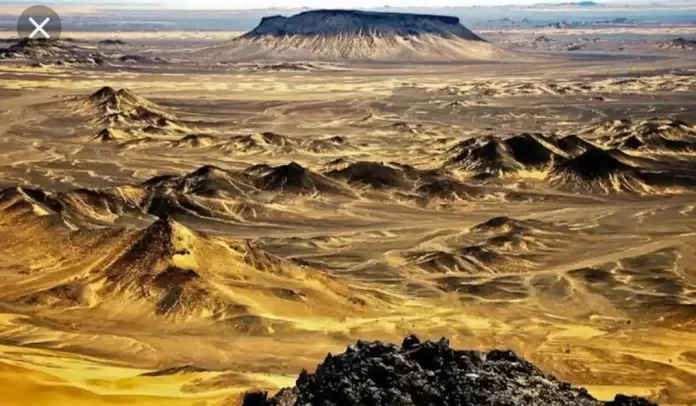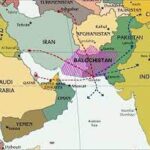The final major ethnic population of Baloch in Iran, Afghanistan, and Pakistan is the Baloch. A comparatively to others they are minority in these countrys, the Baloch, like the Pakhtuns, are a tribal population whose original territory extends beyond the national borders. Over 70 percent of the Baloch live in Eastern Baluchistan Pakistan, with the remainder in Iran and Afghanistan. The Baloch trace their roots to tribes migrating eastward from around Aleppo, in Syria, before the Christian era. Sometime between the sixth century and the fourteenth century, they migrated to the region of present-day Balochistan.
Baloch speak Balochi, Berahui, Saraiki, Jadgali part of the Iranian group of Indo- European languages. Linguistic evidence indicates the origin of Balochi to be in the pre-Christian Medean or Parthian civilizations. The modern form has incorporated elements from Persian, Sindhi, Arabic, and a number of other languages. Beginning in the early nineteenth century, Baloch intellectuals used Persian and Urdu scripts to transcribe Balochi into written form. Since Pakistan’s independence and with the rise of Baloch nationalism, Baloch have favored the Nastaliq script, an adaptation of Arabic script.
Balochistan has a rich history, rich traditions, people who will welcome you and places that will excite you. It has everything; it is a land of contrasts. It has places with rugged mountains like Chiltan, Takatu, Sulaiman, and plains stretching hundreds of miles. It has fertile land such as in Nasirabad and the tracks in the Pat section of Sibi district and the Makran desert zone. It is home to the hottest place in the country like Sibi and has towns with relatively cooler climate such as Quetta, Ziarat, Kan Mehtarzai and Kallat where temperature goes much below freezing point in winter and the areas remain under a thick cover of snow.
Irrigated farming is concentrated near oases in two kinds of systems: open channels that bring water from a few riverbeds, and subsurface drains (karez) that channel groundwater downward to planted fields. However, such irrigation and cultivation are extremely limited, forcing most Baloch to eke out a living by herding or farming in the marginal hinterland.
It’s a land unaltered and untouched by modern hands. Often neglected by tourists, Balochistan gives a true taste of adventure. Take a road trip by Makran Coastal Highway and you cannot help but fall in love with this land.
The 653 km Makran Coastal Highway embodies undiscovered adventures and opportunities to explore a landscape not frequented by many. The highway stretches from Karachi to Gwadar and passes through Kund Malir, Ormara and Pasni. One can literally see the most beautiful skies and all kinds of weather on this highway. The coast also has the best beaches in Pakistan with some amazing ‘road and sand’ art all the way down to Iran border. Makran Coastal Highway itself is a project of vital national interest undertaken by FWO aimed at facilitating, bridging and developing various sectors of economy and opening new avenues of prosperity. A stainless carpet-like road surrounded by mountains with camels sauntering on both sides of the track, the Makran Coastal Highway is a sheer joy to drive on. It is not difficult to forget that you’re just a couple of hours away from Karachi. The freshness of the air, and the cleanliness of the environment creates the setting for a long, in fact, a very long drive.Once you get on this Highway, the landscape transitions as it becomes delightful and interesting, leaving the plains behind and entering into the Makran Range. The first attraction is on the left side where there are various active mud volcanoes out of which the most prominent are Chandragup I and II. There are more than 80 active mud volcanoes in Balochistan.
Kinship and social relations reflect the exigencies of dealing with the harsh physical environment. Like other Pakistanis, Baloch reckon descent patrilineally. Lineages, however, play a minimal role in the lives of most Baloch. They are notably flexible in arrangements with both family and friends. Ideally, a man should maintain close ties with relatives in his father’s line, but in practice most relations are left to the discretion of the individual, and there is wide variation. It is typical for lineages to split and fragment, often because of disputes with close kin over matters such as inheritance and bad relations within marriages. Most Baloch treat both mother’s and father’s kin as a pool of potential assistance to be called on as the occasion demands. Again, the precariousness of subsistence favors having the widest possible circle of friends and relatives.
Marriage patterns embody this kind of flexibility. As in many parts of West Asia, Baloch say that they prefer to marry their cousins. Actually, however, marriage choices are dictated by pragmatic considerations. Residence, the complex means of access to agricultural land, and the centrality of water rights, coupled with uncertain water supply, all favor flexibility in the choice of in-laws. The plethora of land tenure arrangements tends to limit the value of marrying one’s cousin, a marriage pattern that functions to keep land in the family in other parts of Balochistan.
The majority of Baloch are Hanafi Sunnis, but there is a community of an estimated 2,000,000 to 2,400,000 Zikri Baloch, who live in the coastal Makran area and in Karachi. The Zikris believe in the Messiah Nur Pak, whose teaching supersede those of the Prophet Muhammad. Their beliefs, considered heretical, have led to intermittent Sunni repression of their community since its founding in the fifteenth century.
Only among the coastal Baloch is marriage between cousins common; there, nearly two-thirds of married couples are first cousins. The coastal Baloch are in greater contact with non- Baloch and manifest a concomitantly greater sense of group solidarity. For them, being “unified amongst ourselves” is a particularly potent cultural ideal. Because they are Zikris, they have a limited pool of eligible mates and do not generally marry outside of the group of Zikri Baloch.
Baloch society is stratified and has been characterized as “feudal militarism.” The significant social tie is that between a leader, the hakim, and his retinue, consisting of pastoralists, agriculturists, lower-level leaders, and lower- level tenant farmers and descendants of former slaves (hizmatkar). Suprafamily groups formed through patrilineal descent are significant mostly for the elite hakim, whose concern for rivalry and politics is not shared by other groups.
The basic exchange traditionally underlying this elaborate system was the hakim‘s offer of booty or property rights in return for support in battle. In more modern times, various favors are generally traded for votes, but the structure of the system–the participation of the lower-level leaders and the hizmatkar through patron-client ties–remains much the same.
In common with the neighboring Pakhtuns, Baloch are deeply committed to maintaining their personal honor, showing generous hospitality to guests, and giving protection to those who seek it of them. However, the prototypical relationship is that between the leader and his minions. A Baloch suffers no loss of status in submitting to another. Although competition for scarce water and land resources characterizes social relations between minor leaders and hizmatkar, competition coexists with a deeply held belief in the virtues of sharing and cooperation. Sharing creates networks of obligation among herders, mutual aid being an insurance policy in the face of a precarious livelihood.
Baloch tribal structure concentrates power in the hands of local tribal leaders. The British played local rivals against each other in a policy of indirect rule, as they did with the Pakhtun tribes to the north–and virtually throughout the subcontinent. In essence, the British offered local autonomy and subsidies to rulers in exchange for access to the border with Afghanistan. In the early 1990s, local leaders maintained this policy to a large extent, continuing to exploit the endemic anarchy, whether local, provincial, or national.
There have been sporadic separatist movements in Balochistan since independence. Baloch have long been accustomed to indirect rule, a policy that leaves local elites with a substantial measure of autonomy. The 1970s saw a precipitous deterioration in relations between Balochistan and the central government, however. The violent confrontation between Baloch insurgents and the Pakistani military in the mid-1970s was particularly brutal. The conflict touched the lives of most Baloch and politicized those long accustomed to accepting the status quo. Original demands for greater regional autonomy escalated into a full-scale movement aimed at restructuring the government along confederal lines. By the mid-1980s, traditional cleavages among hakim, minor leaders, and hizmatkar had declined in importance as the Baloch increasingly thought of themselves as a unified group in opposition to Pakistani, or Punjabi, hegemony.
Zia ul-Haq’s overthrow of Zulfiqar Ali Bhutto in 1977 was welcomed by many in Balochistan, in contrast to popular sentiment in the rest of the country, which was appalled by the extraconstitutional act. As relations with the central government began to smooth out, however, the Soviet Union invaded Afghanistan in December 1979, placing nearly the entire northern border of Balochistan on alert as a frontline area.
Balochistan’s landscape in the 1980s changed markedly as Afghan refugee camps were established throughout the northern parts of the province. In many instances, temporary mud housing eventually became transformed into concrete structures. The refugees also caused the demographic balance to change as ethnic Pakhtuns–many refugees from Afghanistan–came to settle in Balochistan.
Although social conditions in rural areas have changed little for most Baloch, two scandals in the early 1990s caused the region to receive much attention. The first grew out of reports that some owners of brick kilns in remote parts of the province had labor practices that resembled slavery, complete with indenturing workers to loans that were passed down through generations. The second was the charge that young boys were being recruited from the most remote parts of the province to be “camel boys” in races in the Persian Gulf states. The screaming of the young boys, who are tied to the backs of racing camels, supposedly scares the animals into running faster. The young boys often are maimed or killed in the process. Impoverished parents unwittingly accepted payment on the promise that their son would be employed as an apprentice.
Because of the area’s limited population and its low population density levels, there has been little development in Balochistan except in Quetta, the capital of the province. The rural programs that exist stem mostly from the efforts of the Agha Khan Rural Support Development Project, an NGO that has expanded into rural Balochistan on the basis of its successes in the mountains around Gilgit, in the far north of the country. This project works on organizing disparate communities into local support groups and has had particular success in reaching women in remote areas of Balochistan.





Comments